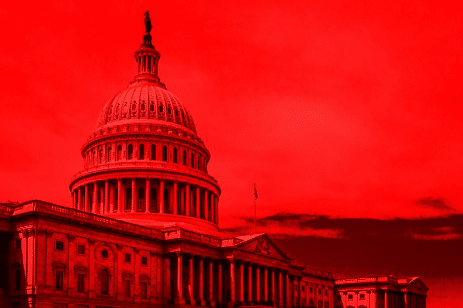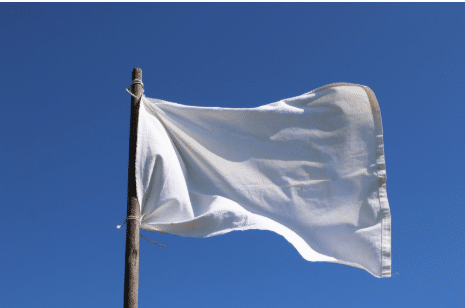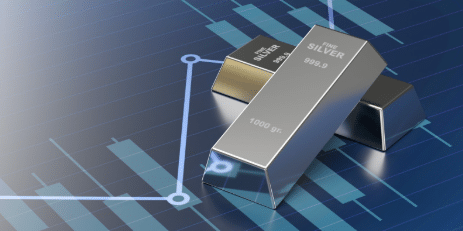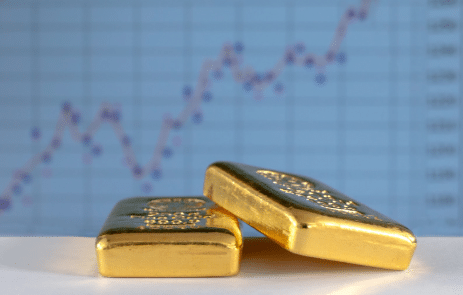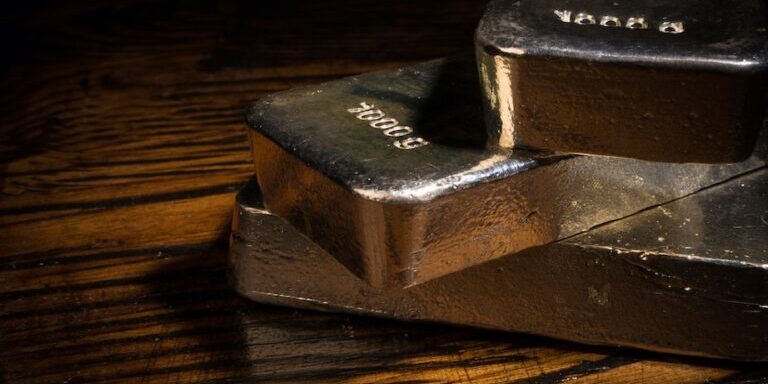
How Rare Is Silver? - Silver Rarity Explained
The history of silver is synonymous with the history of money for 5,000 years. Even today, in the era of unbacked currencies, silver enjoys continued investment demand as a preservation of wealth. When we look at significant events in silver supply and demand, we can trace the economic and monetary history of our past.
Silver’s Key Role Throughout History
Humans have had an infatuation with silver for more than five millennia. Silver has given birth to empires. It provided the means to lift ancient trade out of the barter system. Silver demand has encompassed art, currency, industry, investment, and even medicine since ancient times. Gold gets top billing, but it was silver that made the everyday world go around. It was silver’s value as money over the last 50 centuries that was behind most of the major events in the silver price history.
3000 BC: First Large Scale Silver Mines
Silver was found in large amounts around 5000 BC when prehistoric people dug the first copper mines. (Silver is often found alongside copper veins.) Large scale silver mining had developed in Anatolia by 3000 BC. This was to meet the demand from the first ancient city-states, which used the metal as a common medium of exchange.
1200 BC: Athens Opens Laurium Silver Mines
The discovery and exploitation of the massive silver seams at nearby Laurium enabled ancient Athens to finance an army and navy, and win control of the Aegean from the Persians. Records estimate that up to 30 tonnes of silver per year were mined at Laurium. The famous Athenian “Owl” tetradrachm that was used as currency throughout the Mediterranean was minted from silver mined at Laurium.
200 BC: Spain Becomes Major Supplier Of Silver For Roman Empire
Silver from Spain fueled the ancient economies of the Mediterranean for centuries. By the time Phoenician traders arrived around 1100 BC, the native Iberians had been extracting silver for 3000 years. The silver exporting Phoenician settlements fell under the control of Cartage until approximately 200 BC, when they were conquered by the Roman Republic. Spanish silver financed the expansion of the Roman Empire, supplying up to 200 tonnes of silver a year at peak production. These were the largest silver mines in the world, until the Spanish conquest of Central and South America.
1545: Spain Discovers Massive Silver Deposits In Latin America
In 1545, Spanish conquistadors discovered the massive silver deposits of Potosi, in Bolivia. The next year, large silver deposits were uncovered in Mexico. Several other silver-bearing areas were also discovered in Peru. Spanish possessions in these nations accounted for approximately 85% of global silver production in the time between the Conquista and these Latin American nations achieving independence in the early 1800s.
1858: The Comstock Lode Is Discovered In Nevada
The Comstock Lode in Nevada was the first large silver discovery in the United States. The resulting silver rush rivaled that of the California Gold Rush ten years prior. The fact that the Comstock Rush began with the discovery of gold lured many experienced miners from California, looking for a new chance to strike it rich. Despite being the richest silver discovery in America, nearly half the profits in the Comstock was from gold.
1873: Germany Adopts Gold Standard, Dumps Its Silver Reserves
France suffered a crushing defeat at the hands of Prussia and its allies in the 1870 Franco-Prussia War. As part of the surrender terms, France had to pay an indemnity of 5 billion francs in gold. These reparations not only funded the unification of German states into the Empire of Germany but also allowed the new nation to drop the Silver Standard for the Gold Standard. Germany dumped 7.1 million pounds (3,220 metric tons) of silver on the market between 1873 and 1879.
1873: US And Other Nations Demonetize Silver
Unfortunately for silver prices, Germany’s move from the Silver Standard to the Gold Standard occurred during a global supply glut. Total output from the world’s silver mines had doubled to 80 million ounces annually from the early part of the century.
Afraid that falling silver prices would cause a huge spike in inflation, nations that were on a bimetallic standard quickly moved to demonetize large silver coins. This effectively put them all on the Gold Standard. The United States passed the Coinage Act of 1873, which halted the production of silver dollars and limited the legal tender amount of small silver coins to five dollars.
1878: Bland-Allison Act Forces US Treasury To Buy Silver
With the US no longer making silver dollars, the “silver barons” of the Western US had lost their loophole for getting above-market prices for their silver. Before, they could present unlimited amounts of silver to the US Mint and exchange it for silver dollars. When silver was trading below $1.29 per ounce (the official government exchange rate), turning it into silver dollars resulted in an instant profit.
Deflation during the 1870s hit American workers and farmers especially hard. They joined forces with Western silver mining interests to get Congress to pass the Bland-Allison Act in 1878. This forces the government to buy $2 million to $4 million worth of silver every month, and coin it into silver dollars. This was not only a huge subsidy for silver miners, it expanded the money supply. Unfortunately for the farmers and workers, not enough of the new dollar coins circulated to offset the government’s deflationary monetary policy.
1885: Silver Is Discovered In Coeur d’Alene Idaho
In 1885, the largest silver rush since the Comstock Lode began in the Coeur d’Alene district of Idaho. This injected even more silver into global markets, making the silver subsidy of the Bland-Allison Act even more important. Annual global silver production quadrupled from 1875-1900, compared to annual production between 1800 and 1875.
1890: The Sherman Silver Purchase Act Is Passed
As silver prices continued to fall, the pro-inflation “Silverite” forces demanded the government increase its silver purchases. The result was the Sherman Silver Purchase Act, which forced the government to buy 4-½ million ounces of silver a month and coin it into silver dollars. This made the US government the world’s second-largest global buyer of silver. Britain, who maintained a silver standard in their possession of India, was the largest.
1893: Financial Panic Forces Repeal Of Sherman Silver Act
The Panic of 1893 was caused by fears that the massive silver purchases by the US government would force the government to pay its debts in silver instead of gold. This led to a massive sell-off in stocks and other assets for gold coins. The gold was then repatriated or hoarded.
The collapse of the US gold reserves sparked a financial panic and bank runs, as both foreign and domestic investors cashed out. President Grover Cleveland called a special session of Congress to repeal the Sherman Silver Purchase Act, and restore faith in America’s commitment to the Gold Standard.
1918: The Pittman Act Authorizes The Melting of 270 Million Silver Dollars
The 1918 Pittman Act authorized the melting of up to 350 million existing silver dollars, with the resulting bullion sold to Britain. Britain was facing a currency crisis in its largest possession of India during World War I. Indian industry, food, and soldiers were vital in Britain’s fight against the Central Powers. To pay for these purchases, the British government had issued more silver certificates than it had silver to back them. The US supplied that silver by melting some of the hundreds of millions of silver dollars sitting unused in Treasury vaults. 270 million silver dollars in all were melted for the war effort.
In order to get the backing of Western states in Congress, it was stipulated that every melted silver dollar had to be replaced by new ones. This began in 1921, with the Peace Dollar.
1934: Franklin D. Roosevelt Confiscated Gold And Silver
The Silver Purchase Act of 1934 authorized the government to nationalize domestic silver mines. Privately owned silver, aside from circulating coinage, was confiscated in the same manner as gold. Citizens were allowed to own a maximum of 500 oz of non-monetary silver. The US Treasury was ordered to buy silver at 50 cents per ounce, nearly double the market price, to support the silver industry.
1946: Silver Purchase Act of 1946 Makes US The Top Silver Buyer
The Silver Purchase Act of 1946 ordered the US Treasury to buy domestic silver from all sellers at the rate of 90 cents to the ounce. This was another silver subsidy by the government since silver was selling at 87 cents per ounce at the time. The Treasury was ordered by the same Act to sell silver at 91 cents per ounce to anyone who wished to buy. Since the government was buying silver above the market rate (again), the national silver stockpile boomed. Domestic silver mining tripled since companies had a guaranteed price to sell at.
1959: Global Silver Shortage
The global economy continued its post-WWII boom in the 1950s. Nations destroyed in the war had recovered, and demand by a rapidly expanding middle class exploded. This was the first year that global silver demand outstripped production by a large margin. The US Treasury began selling silver into the market to keep prices under $1.29/oz. Above this level, silver dollars could be melted at a profit. This resulted in the US becoming the world’s leading seller of silver by the mid-1960s.
1961: Silver Prices Break Government Ceiling Of 91 Cents
Global silver prices permanently rose above 91 cents an ounce in 1961. Since this was the legal limit that the US Treasury could sell government silver, buyers flocked to buy silver at a below-market price of silver. President John F. Kennedy ordered a halt to government silver sales, and the retirement of $5 and $10 silver certificates. With the US no longer capping silver prices, prices rose rapidly.
1964: Silver Prices Break Silver Dollar Melt Value Of $1.29
Silver bullion hoarding became a frenzy as silver prices and the spot price kept climbing. Prices broke above $1.29 in 1963. This meant that a person could make an instant profit by presenting a silver certificate for redemption, in return for the equivalent face value in the byproduct of silver dollars. This led the Treasury Department to begin redeeming silver certificates with bags of silver granules when it ran out of silver dollars.
1965: The US Government Removes Silver From Circulating Coinage
Global silver prices continued to rise as precious metals continued to be mined from the earth's crust. The US government had halted silver sales in 1961, but continued coin hoarding meant there was a drastic shortage of dimes, quarters, and half dollars. As soon as the US Mint released new coins, they disappeared. The Mint almost exhausted government silver stockpiles before Congress stepped in. The Coinage Act of 1965 removed all silver from dimes and quarters and cut the purity of the half dollar from 90% to 40%. (The last silver dollar had been minted in 1935.)
1968: Silver Certificates No Longer Redeemable For Silver
The government removed the silver redemption clause for all outstanding silver certificates in 1968. While they continued to be legal tender, they could no longer be redeemed in silver. As they came into the Treasury, they were destroyed and replaced with Federal Reserve Notes. Silver demand grew an average of 16% annually during this period, while silver production grew less than 2%.
1979: Global Silver Shortage Reaches A Peak
OPEC oil embargoes, high inflation, and stagnant economies intensified investor demand for silver. Speculators, notably a cartel formed by the Texas billionaire Hunt brothers, began acquiring silver and silver futures at an alarming rate.
1980: Hunt Brother's Attempt To Corner The World Silver Market Fails
After gaining control of three-quarters of the global silver market, the Hunt brothers were blind-sided by a sudden change in regulations by the Federal Reserve and the commodities exchanges. These unexpected changes were aimed at wrecking the Hunts’ scheme. Silver prices dropped from an all-time high of $50.35/oz in January to $15.80 in March, when margin calls forced the Hunts to liquidate the silver holdings they had hoarded. The same year, silver production (mining and scrap) finally closed the gap with demand.
1985: American Silver Eagle Bullion Coin Introduced
Responding to persistent investor demand for a government-produced silver investment vehicle, Congress authorized the American Eagle Bullion coin program. In addition to various sizes of Gold Eagles, a one troy ounce Silver Eagle began production. The American Silver Eagle (ASE) would become the world’s leading silver bullion coin.
2006: First Silver Exchange Traded Fund (ETF) Is Introduced
The first silver ETF was introduced by iShares in 2006. Trading under the symbol SLV, the iShares Silver Trust was the first financial vehicle to allow easy, highly liquid investments backed by physical silver. Investors used the ETF shares to get exposure to price movement in the silver market. Shares of SLV are not a claim to any silver held by the Trust. Instead, the price of SLV shares tracks the movement of silver prices.
2008: Silver Demand Spikes In The Global Financial Crisis
The 2008 Global Financial Crisis hit all sectors of the economy. An explosion of safe-haven demand saw both silver and gold hit multi-decade highs. Silver prices hit a high of $20.92 USD in 2008, a level not seen since the climax of the Hunts’ scheme to corner the silver market.
Silver ETFs saw record inflows of 93.1 million ounces for the year. Production and supply of silver coins and bars rose 63% for a new record of 64.9 million ounces. The physical silver market experienced shortages. These shortages forced the government to ration American Silver Eagles bullion coins. Demand for silver bars and medallions had silver fabricators working around the clock. Because of this, they were unable to meet the unexpected demand by the US Mint for silver coin blanks.
2011: Debt Crises In EU and US Send Silver To Record Annual High
The debt crises in the US and the European Union in 2011 sent shudders through a global economy still traumatized by the Global Financial Crisis. Silver prices jumped after America’s sovereign debt was downgraded for the first time. 2011 saw silver prices hit a closing price of $48.70 USD. This was the highest daily closing price for the silver ratio since the peak of the Hunt brothers’ attempt to corner the market in 1980.
Despite increased price volatility, 2011 also marked the highest annual silver price in history, at $35.12 USD. Physical silver investment demand hit new highs. Silver Eagle supply failed to keep up with demand again in 2011, due to a shortage of coin blanks. This drove more investors to purchase silver bars, which saw sales jump 67%.
2015: American Silver Eagles Sales Hit Record 47 Million Ounces
Moderating silver prices and the US Mint’s ability to reduce production shortages sent American Silver Eagles to successive highs from 2013 to 2015. The all-time Silver Eagle sales record was set in 2015, with 47 million coins sold. Private mint silver products also saw record demand. Total physical silver investment demand hit a record 292.3 million troy ounces that year. This demand sent silver supplies into a deficit for the third year in a row.
Conclusion:
This historical timeline explains the rarity of silver and its drop in production over the years despite increased industrial uses. How rare is silver? The production through the mining of silver has slowed dramatically and its price has risen. The stock market has been extremely volatile in 2020, plunging through the winter months but then bouncing back convincingly since March. However, one investment that’s up considerably so far in the year is silver. In just the past few weeks, silver has jumped to its best levels in years. It's time to invest in silver rather than an ounce of gold.
The financial market is crumbling and EVERYONE will be affected. Only those who know what's going on and PREPARE will survive... dare we say thrive. Our 7 Simple Action Items to Protect Your Bank Account will give you the tools you need to make informed decisions to protect yourself and the ones you love.





